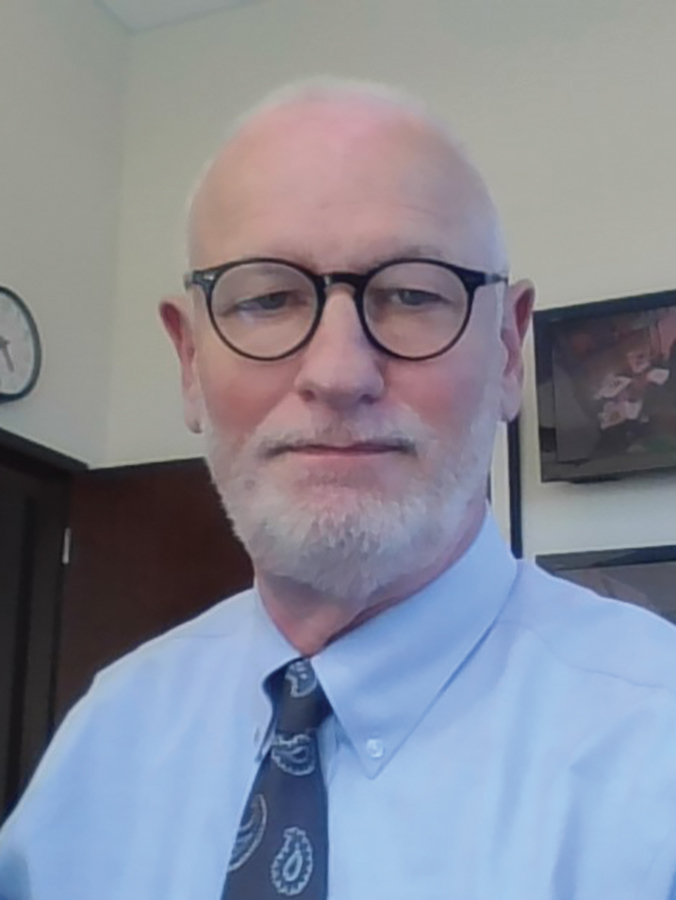
A ground-level look into the burnout crisis
RJI released the results of its survey on burnout in the news industry earlier this year. The survey produced a lot of data to work with, and researchers are still combing new insights from the responses of current and former journalists, but data is only one piece of the puzzle.
It’s important to know that the vast majority of respondents supported a four-day work week and more flexible scheduling, for example, or that more in-house resources to help people navigate the particular hazards and traumas of the industry are needed. But whether news organizations are acting on these concerns — or are likely to do so — is another matter entirely.
In an industry that has been known to react cautiously when it comes to change, whether it was the shift to digital in the 90’s and early 2000’s or today’s AI boom, some see a generational change in the way workplace concerns are handled.
“My generation, we put up with just about anything for a paycheck,” said Chuck Maulden, vice president for content at Griffin Media, which owns a network of TV and radio stations in Oklahoma. “I can’t tell you how many bad situations I’ve worked through because I was married, I had kids, I had a mortgage to pay. That was just the way I was raised.”
Maulden worked in broadcast news for 45 years before taking on his administrative role last year. In 1987, he covered the largest family mass murder in history when Ronald Gene Simmons murdered 16 people in and around Russellville, Arkansas. 14 were members of Simmons’ own family, including his wife, children and grandchildren.
Maulden is not keen on sharing how that story affected him, admitting that his generation “just didn’t talk about those things.” But his approach with the content producers he oversees is markedly different: after learning that staff at one of Griffin’s local TV newsrooms were reporting mental issues stemming from the stories they covered, he decided it was time for a more proactive approach.
“I said, ‘We need to deal with this,’ and the best way to deal with it is to ask, ‘Why is this happening?’” Maulden said.
He recognized that today’s reporters, editors, managers and even behind-the-scenes staff are dealing with a perfect storm of not only the same traumatic situations that have always existed, but the additional stress of public distrust of media — which can quickly and unexpectedly escalate into threats to safety — as well as the pressure of immediacy in an “always on” society. At the same time, they are more willing to speak up about the struggles they are facing, a trait he was eager to embrace.
Drawing from the research of Desiree Hill, a college administrator and Griffin Media alum who has sought to help news organizations develop trauma-informed resources, Maulden instituted training both for existing staff and as part of the onboarding process for new staff. Training materials are frank about the realities of the industry, quoting statistics like “98% will witness traumatic events as part of their work,” but they also provide strategies and resources to help people prepare for, and recover from, such events.
Beyond emphasizing the availability of counseling and preparedness for traumatic situations, the training also urges staff to step back from stories when necessary and to speak up when they are struggling. These are concepts that Maulden hopes will help cultivate a more supportive environment that does not place emotional vulnerability in opposition to journalistic principles — both self-care and upholding the public service mission of journalism are emphasized in the training.
“‘Seek the truth’ and ‘minimize harm’ are in balance,” Maulden said. “When you have a newsroom that doesn’t understand what minimizing harm is, then they’re not a compassionate room. They’re just all about seeking the facts without any regard to what the impact is.”
Still, he acknowledged that instituting more supportive training and policies can be a complex task depending on the newsroom.
“Some newsrooms are just hard-nosed,” he said. “That comes down from the company and from the news director. I’ve worked for newsrooms where if you walk in and bring up ethics, they go, ‘that’s that capital J stuff, we don’t do that.’”
Indeed, while RJI’s anonymous survey had remarkably successful turnout with 1,140 responses, some declined and, privately, admitted they did not want to run the risk of making waves in their workplace. Likewise, in developing this story, it was not easy to find news organizations that were willing to go on the record about their efforts to combat burnout, suggesting that while newsroom culture might be improving, there remains a general hesitancy to openly draw attention to these issues.
‘Seek the truth’ and ‘minimize harm’ are in balance. When you have a newsroom that doesn’t understand what minimizing harm is, then they’re not a compassionate room. They’re just all about seeking the facts without any regard to what the impact is.
Chuck Maulden, vice president for content, Griffin Media
The chief technology officer for a major public media network on the west coast, who requested that we withhold his name and that of his organization, said he has implemented a four-day workweek for some staff — though not for those in the newsroom.
For technical and media operations staff at this network, the work week now consists of four 10-hour days, and additional flexibility means those might not be the same days each week. IT staff are also allowed to work from home when possible.
It’s a step in the right direction: behind-the-scenes staff in the news industry can experience vicarious trauma and face the same stresses as their newsroom colleagues when it comes to public hostility. Media operations staff assemble content to get it ready for publication, exposing them to the same footage, images and other potentially traumatic content that those in the newsroom are dealing with.
At the same time, the media operations team is itself relieving some of the potential burnout-inducing strain on the newsroom.
“Currently, many of our news folks and content creators not only have to manage telling a story and creating the content, but they then have to version it and send it to all the different places where we deliver content,” the CTO said. “We’re trying to evolve this team to pick up that sort of process work in a highly automated way versus having our content folks spinning their wheels on things that aren’t creating content.”
He added that while he hasn’t seen a difference in productivity, the staff have shown a marked improvement in job satisfaction. In addition, the added flexibility has allowed managers of teams that essentially work 24/7 to spread their schedules across multiple shifts, allowing them to work with people they don’t normally see regularly.
He also agreed with a key, positive finding of the survey, which found that 91% of current professionals agree with the statement, “I love my job.”
“Working for a public media station, everybody here could probably make more money working somewhere else,” he said. “So most people are here for a purpose. It’s a purpose of public service.”
Still, echoing Maulden’s comments about a generational shift, the CTO added that his organization is making a concerted effort to ensure that a public service mission isn’t the only reason staff choose to stay, whether they work in or outside the newsroom.
“We have been focusing on the wellbeing and psychological safety of our staff for some time now,” he said. “At the leadership level, we’ve talked a lot about how we can make sure we’re taking care of our folks and giving everyone more flexibility. Somebody of my age, we didn’t used to think about those sorts of things. We’re learning how to operate differently there.”
But the tendency to put the job’s public service mission ahead of personal wellbeing has been entrenched in journalism since its beginning, and changing that status quo means overcoming a still-widespread perception that de-prioritizing one’s health is necessary to succeed in the industry.
Denise Rehrig, co-executive producer at The Late Show with Stephen Colbert, spent 16 years as a broadcast producer, including eight years as a senior producer at Good Morning America. But in 2014, she reached a breaking point.
“It was like conducting an orchestra of crazy every single day, and I loved doing that, but I hit a wall one day,” Rehrig said. “I don’t know why — nothing changed at work, but I had changed. Something had clicked. It had been 16 years of constant news cycles, overnights and holidays and weekends, and I was like,’ I need a break.’”
Her break lasted for more than a year. She left her job and traveled the world with her husband, resolving not to browse LinkedIn or stay plugged into the job market. It was a choice she described as “the best gift I could have given myself.”
Eight years on, having found a fresh start at The Late Show, the experience of switching industries has taught her more about the intractability of certain stressors inherent in news than about what she might do differently today.
“If I chose to go back into news, I’d like to say that I’d go in as a calmer person, that I would have a different perspective,” Rehrig said. “But the reality is, you’re live on the air, you have to fill four minutes, and if a piece is missing and I find out 30 seconds before, it’s kind of a disaster. I’d like to think that I would go back as a kinder, gentler soul, but even if I did, I don’t think I would be as good as I was in that role.”
Then there is Marcus Yam, a photojournalist and foreign correspondent for the LA Times, who performs a job that is traumatic almost by design; as a war photographer, he has covered conflicts all over the world, including the bloody, chaotic fall of Afghanistan and the current violence in the West Bank.
Yam acknowledges the mental and physical toll of his job and wishes news organizations could afford to send larger teams with photojournalists in conflict zones — where he often has only a single partner or is alone — but he also admits to a certain streak of bold autonomy. He has lobbied reluctant bosses to send him into highly dangerous regions where he felt he could capture stirring, untold stories of the human cost of war.
“I’ve learned how to be so self-sufficient that I don’t really need much,” Yam said. “I’d like more support, more resources, but that’s never going to change.”
Reflecting on a time when he took some time off for a knee injury, he said the need for rest and recovery is only one part of the equation.
“I also don’t want to burden my employer,” Yam said. “I don’t want to make it so that I’m squeezing every last drop out of them. You want to be a productive member of the team.”
Yam’s job is an extreme example, but journalism is, by its nature, a sometimes dangerous and frequently unpredictable field populated by highly driven people. But more and more news organizations are realizing that journalists are not asking them to change the realities of the industry. Today’s journalists want to move with the punches, to find a path forward that meets their responsibilities to the public without forgetting about their own needs. As more organizations experiment with flexibility, the merits of that approach become clearer.
Cite this article
Fitzgerald, Austin (2024, June 17). A ground-level look into the burnout crisis. Reynolds Journalism Institute. Retrieved from: https://rjionline.org/news/a-ground-level-look-into-the-burnout-crisis/



